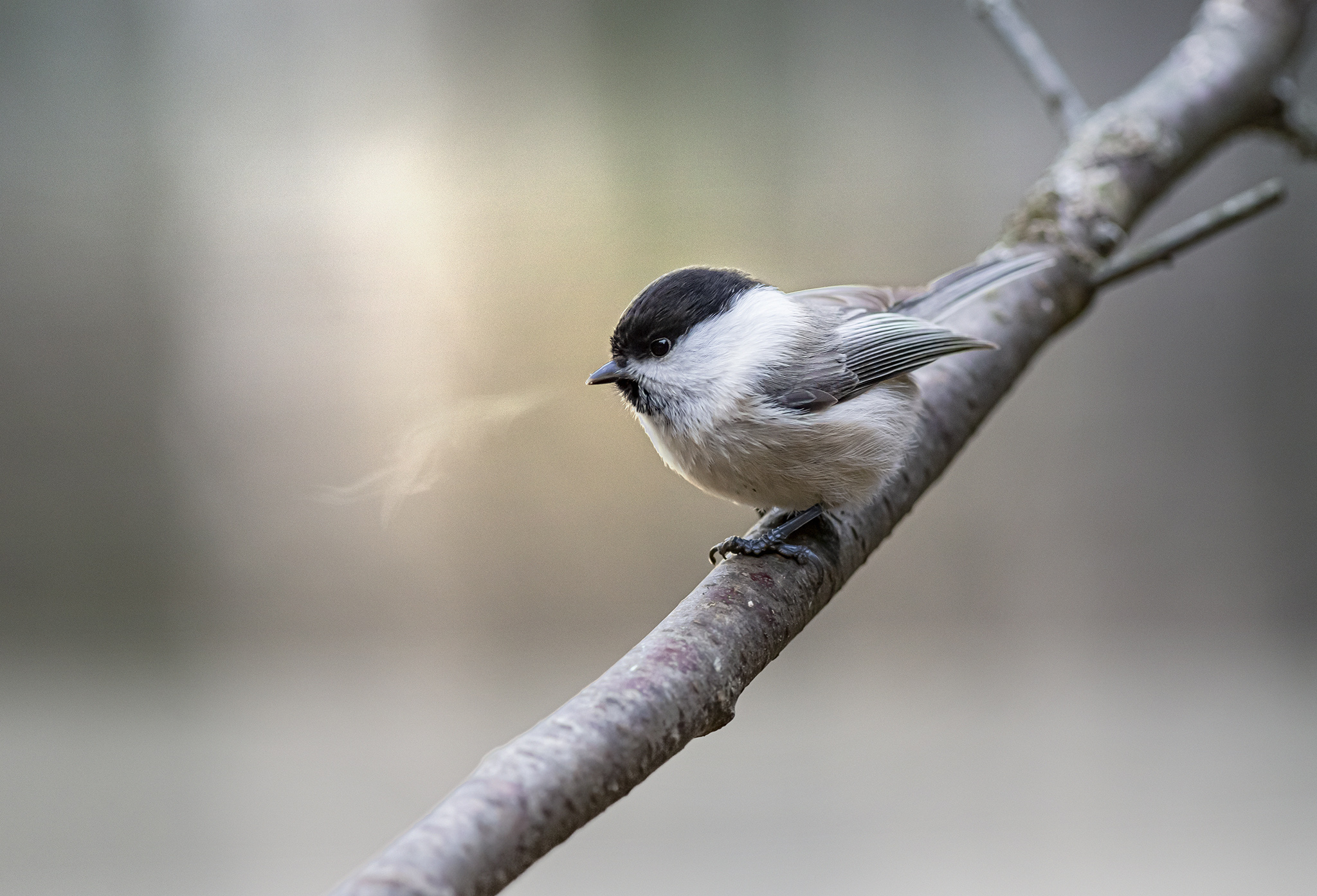The Willow Tit (Poecile montanus) is a small passerine bird belonging to the family Paridae, which also includes tits, chickadees, and titmice. Here are some key points about this bird:
- Appearance: The Willow Tit is a small bird with a round body, short tail, and relatively large head. It has a distinctive black cap on its head, which extends down to its eyes, contrasting with its white cheeks. The upperparts are grayish-brown, while the underparts are pale gray. It can be easily confused with the Marsh Tit (Poecile palustris), but the Willow Tit has a less glossy appearance and a more distinctively patterned head.
- Habitat: Willow Tits are primarily found in woodland habitats, including deciduous and mixed forests, as well as scrubland, parks, and gardens with suitable trees and shrubs. They prefer areas with dense vegetation and are often associated with wetlands or water sources.
- Distribution: Willow Tits are native to Europe and parts of Asia, with their range extending from the British Isles in the west to Siberia in the east. They are widespread but can be locally distributed within their range. In recent years, populations have declined in some areas due to habitat loss and fragmentation.
- Diet: Willow Tits are omnivorous birds with a varied diet. They primarily feed on insects and other invertebrates, including caterpillars, beetles, spiders, and insect larvae. They also consume seeds, nuts, berries, and small fruits, especially in the winter when insect prey is scarce.
- Breeding: Willow Tits typically breed in the spring and summer months. They construct cup-shaped nests in tree holes, crevices, or artificial nest boxes, lining them with moss, feathers, and other soft materials. The female lays a clutch of eggs, usually 7 to 10, which she incubates for about two weeks. Both parents participate in feeding and caring for the chicks until they fledge.
- Vocalization: Willow Tits have a distinctive and varied song, consisting of a series of clear, whistling notes. They also have a range of calls, including contact calls, alarm calls, and territorial calls, which they use to communicate with other members of their species.
- Conservation: Willow Tits are considered a species of conservation concern in some parts of their range due to habitat loss and degradation. Conservation efforts focused on habitat protection, restoration, and the provision of nest boxes can help support Willow Tit populations and ensure their long-term survival.
Overall, the Willow Tit is a charming and adaptable bird species that plays an important role in forest ecosystems as an insect predator and seed disperser. Its distinctive appearance, vocalizations, and ecological significance make it a valued member of the avian community in Europe and Asia.
Visited 263 times, 8 visit(s) today
Views: 516
Advertisements
Subscribe to the newsletter:
